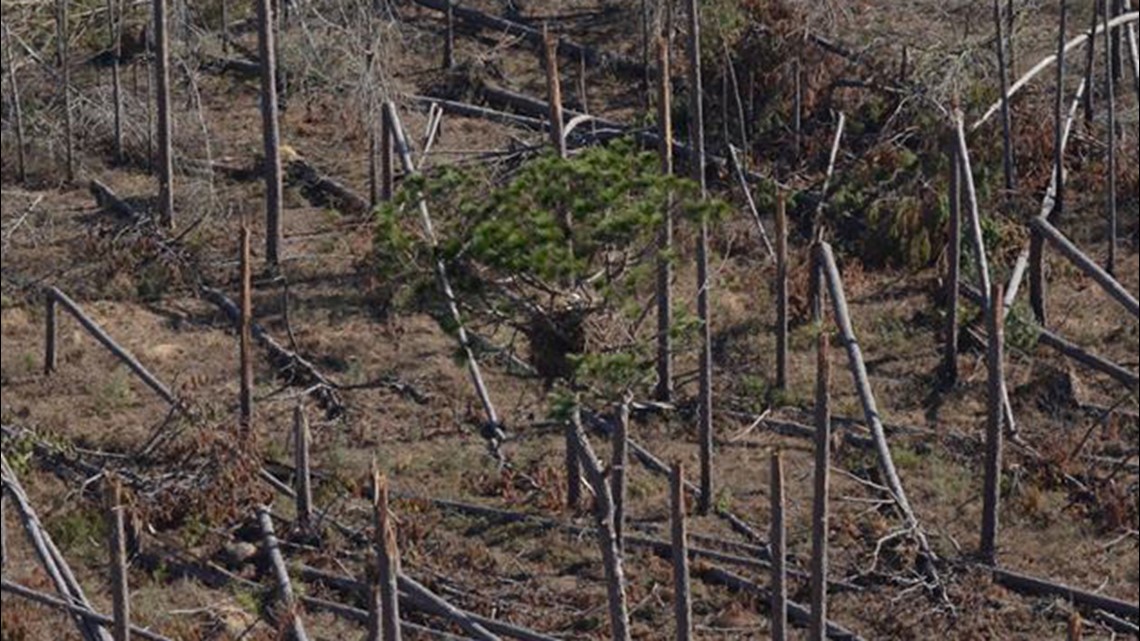Hurricane Michael plowed a line of damage across the Florida panhandle and through the southern half of Georgia last fall that indiscriminately tore through timber like a buzzsaw.
Experts from the US Fish and Wildlife Service estimated the amount of damage to the southern timber territory to be nearly $1.7 billion in terms of damaged or destroyed pine trees and hardwood trees.
They noted that habitats for many of the region's species were turned into sawdust.
“We’ve had damage across the entire farm; trees have snapped off completely,” said Joe Butler Jr., a fifth-generation farmer in southwest Georgia. “It’s devastating both financially and environmentally. We have lost several hundred thousand dollars of timber."
Bald eagles, whose numbers according to the Georgia Department of Natural Resources, have increased dramatically across parts of the state after nearly going extinct in the 1970s, were somewhat plentiful before Michael wound its way across Georgia in October.
Bald eagle numbers in Georgia had dwindled to only one nesting pair by 1970. According to the DNR, a 2017 survey recorded upwards of 218 nests statewide.
DNR biologists are finding bald eagle nests thriving in Hurricane Michael's wake. Many people may have expected the Eagles to have abandoned the area with the level of damage that was observed.
"It’s remarkable how many Bald Eagle nests survived the hurricane at Silver Lake WMA. In some instances I saw forests almost completely leveled except for the eagle nest tree," says DNR biologist, Dr. Bob Sargent.
In a Department of Natural Resources photo of damaged trees at the Silver Lake Wildlife Management Area, a ravaged, but still standing tree can be seen, with the white-crested head of a bald eagle as it sits in its nest. That tree is standing in a sea of broken tree trunks, all apparently damaged by Hurricane Michael.


The Silver Lake Wildlife Management Area is located in Decatur County, Ga., in the far southwestern corner of the state, just north of the Florida state line.
Hurricane Michael came ashore on the Florida Panhandle as a strong Category 4 storm on October 10 with maximum sustained wind speeds of 155 mph. As it moved northward into south Georgia, it continued to tear up land, demolishing crops and burying the state in torrential rains before weakening to a tropical storm before exiting the state.
MORE |

